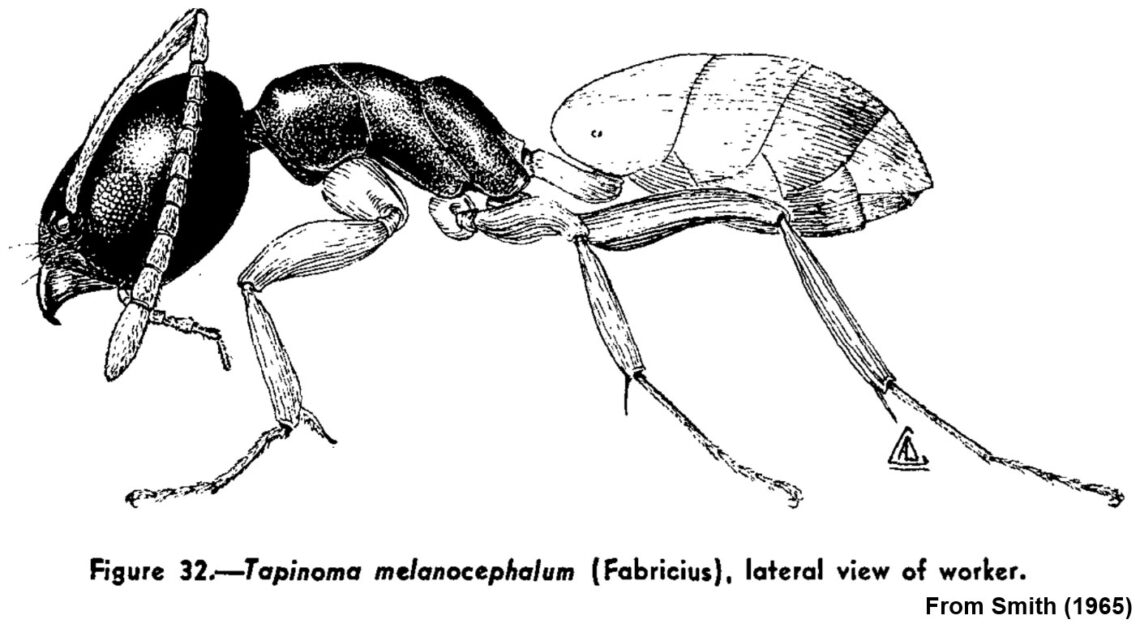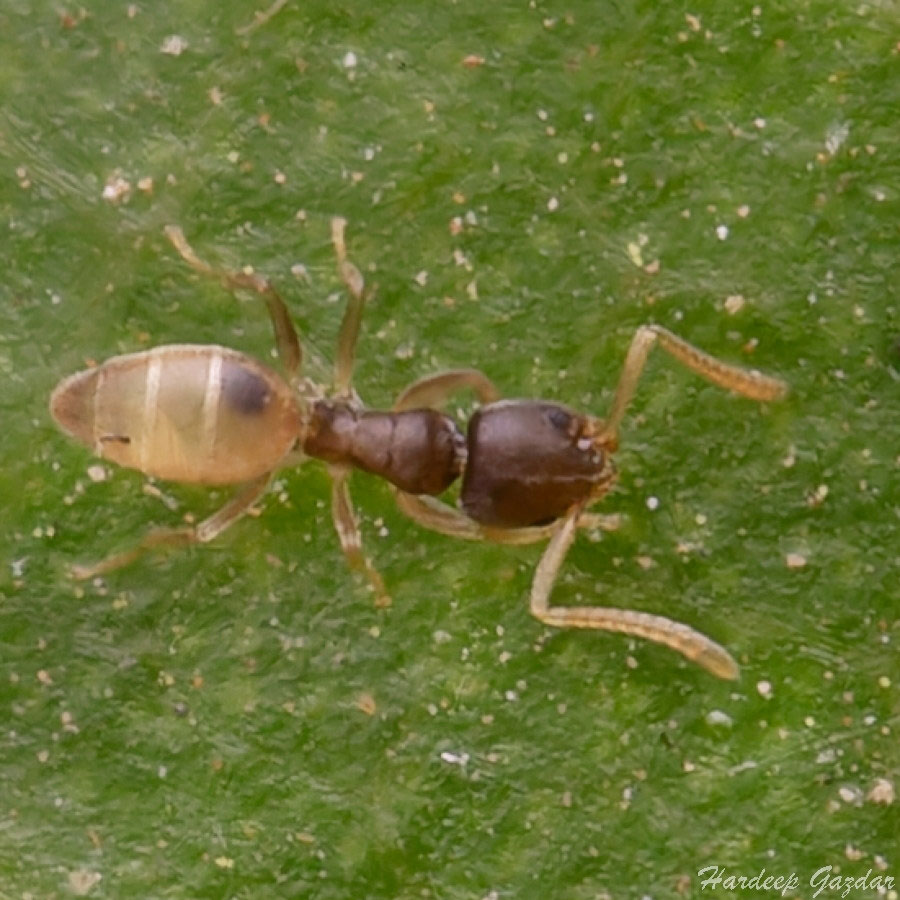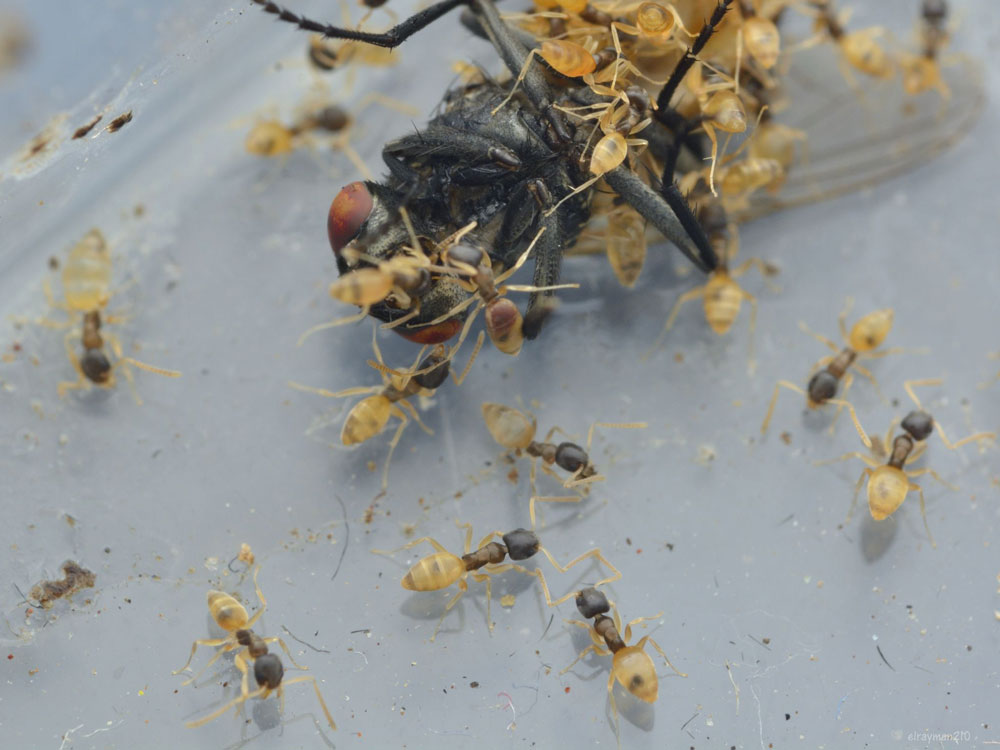
Ghost Ant
Tapinoma melanocephalum
Species Info General
Other common names include: Black-headed Ant
The Ghost Ant has been annoying Hawaii residents for well over a century. It was well-adapted to living aboard ships in the 1800s and thus managed to spread itself around the world. Perkins (1913) wrote, “This small ant flourishes best in dry hot localities on the lowlands or lower mountain slopes. It is very common.” Illingworth (1938) bemoaned this species “as a troublesome pest of residences in the drier beach sections of Honolulu. The workers overrun the houses, getting into all kinds of foods, and even get into the beds, where they cause considerable annoyance by biting people.” Deyrup, Davis & Cover (2000) wrote that this species if found “[a]lmost always in disturbed areas, in many sites seems confined to areas around buildings. Nests are in bark mulch, under objects on the ground, and under loose bark and the bases of palm fronds. It is a general scavenger and attracted to honeydew.”
Where night time or winter temperatures are too low for this species, it simply moves indoors and stays there. Wetterer (2009) wrote “Tapinoma melanocephalum is particularly noted as a pest in homes, restaurants, hospitals, and greenhouses” and “I expect that T. melanocephalum will eventually spread to the disturbed lowlands of virtually every tropical country. This species also appears to be an increasingly common indoor pest in temperate areas, and someday may be found in every major city of the world.” Unfortunately, controlling this ant with pesticides is not very easy. It does not consistently respond to typical ant baits – some days it might take the bait, but most days it won’t.




Identification/Description
This is a fast-moving, tiny ant. Phillips (1935) wrote: “An extremely fast mover when startled its motions are often too rapid for the eye to follow” and Smith (1936) added “When against a dark surface they give the appearance of a large mite.” This is an easily recognized ant, and Deyrup (2017) summed up its appearance well when he wrote: ”Despite its minute size (approximately 1.5 mm), there is no ant easier to identify in the field than Tapinoma melanocephalum. The head and mesosoma are black, the gaster whitish, and on a pale background such as a kitchen counter, a group of these ants appear as black dots running erratically over the surface on the way to harvest a few grains of spilled sugar.” This ant often appears indoors and in large numbers, moving at bewildering speeds.
Impacts
- Significant indoor nuisance
- Can be an agricultural nuisance through the tending of homopterous pests
History
- Ghost Ants have been with us a long time, having been first detected in 1886 in a house in Lahaina. Soon it could be easily found on all the main islands.
Resources/References
- Maui Invasive Species Committee’s Brief Guide to Maui’s Ants – Tapinoma melanocephalum gracilipes – AntWiki
- Deyrup, M. 2017. Ants of Florida – Identification and Natural History. CRC Press, Boca Raton, Florida. 423 pp.
- Deyrup, M., Davis, L. & Cover, S. 2000. Exotic Ants in Florida. Transactions of the American Entomological Society 126(3+4): 293–326.
- Illingworth, J. F. 1938. [Notes & Exhibitions]. Tapinoma melanocephalum (F.) var.
- Proceedings of the Hawaiian Entomological Society 10(1): 19.
- Perkins, R. C. L. 1913. Fauna Hawaiiensis – Introduction. Cambridge University Press, London. 1(4): 1–228.
- Phillips, J. S. 1935. The Biology, Distribution and Control of Ants in Hawaiian Pineapple Fields. Doctoral Thesis, University of Hawaii. 301 pp.
- Smith, M. R. 1936b. The Ants of Puerto Rico. The Journal of Agriculture of the University of Puerto Rico 20(4): 819–875.
- Smith, M. R. 1965. House-Infesting Ants of the Eastern United States: Their Recognition, Biology, and Economic Importance. Agriculture Research Service, U.S. Department of Agriculture. Technical Bulletin No. 1326: 1–105.
- Wetterer, J. K. 2009. Worldwide spread of the ghost ant, Tapinoma melanocephalum (Hymenoptera: Formicidae). Myrmecological News 12: 23–33.
- Header and background image: Attribution: Alex Wild / alexanderwild.com Used with permission
